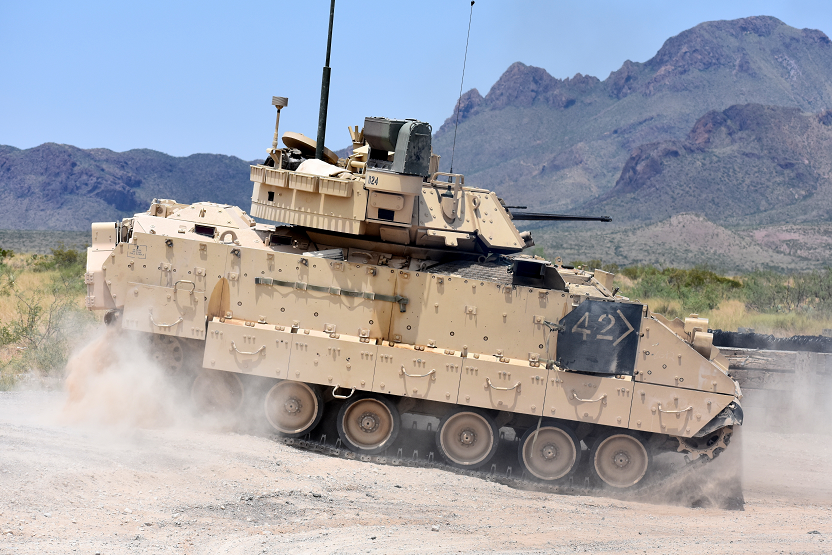This post is also available in:
 עברית (Hebrew)
עברית (Hebrew)
The United States Army’s Ground Vehicle Systems Center (GVSC) has been at work developing software and sensors that can convert both wheeled and tracked vehicles into off-road unmanned vehicles. Where autonomous cars developed for the general public rely on GPS and known roads, the Army’s system can operate in no comms, no GPS, and on off road trails that may have changed due to roadside bombs or natural disasters such as floods.
For this technology, the Army plans on adopting and adapting technologies developed by the auto industry for autonomous cars. Technologies such as collision avoidance algorithms and cost effective sensors can great benefit the Army’s purpose.
“Pretty much all the driver warning/driver assist features… we’re basically buying from the commercial automotive industry and adapting them to the military,” said Bernard Theisen, a senior GVSC engineer, to Breakingdefense.com.
However, autonomous civilian cars heavily rely on marked lanes, curbs, and access to GPS and mapping applications. Military vehicles, on the other hand, may not have access to maps of the road, not to mention lane marking and pavement. The software developed by the GVSC includes an exploration mode, where the system begins with no map and as it drives and explores, it begins to build its own map. This feature isn’t available on all vehicles, however it has managed to work in experiments. “We could drop a robot in the middle of nowhere with no information [and it would] start building the map,” Theisen noted.
The system has also experimented with one vehicle exploring the area and sharing its map data with other unmanned vehicles, however this research is still in its early stages. There is also potential to send a swarm of ground vehicles utilizing the GVSC software to map out roads, valleys, and tunnels before any human troops enter the area.
Even when the vehicle is following a predetermined route the software will still need to be somewhat autonomous. The software is capable of allowing the vehicle to overcome any obstacles along the route and if the vehicle gets lost, it could call a human controller to remotely operate the vehicle.
If the software loses connection to its human operator, then it could either continue on its mission or automatically navigate to the last known place with communications.
The system can be implemented to wheeled and tracked vehicles. However in order to physically implement the software to the vehicles, engineers will need to convert the vehicle to a drive-by-wire format first. This would make it possible for electrical inputs to control the vehicle, rather than mechanical actuators. But generally speaking, the software could be implemented to most of the Army’s vehicles.


























